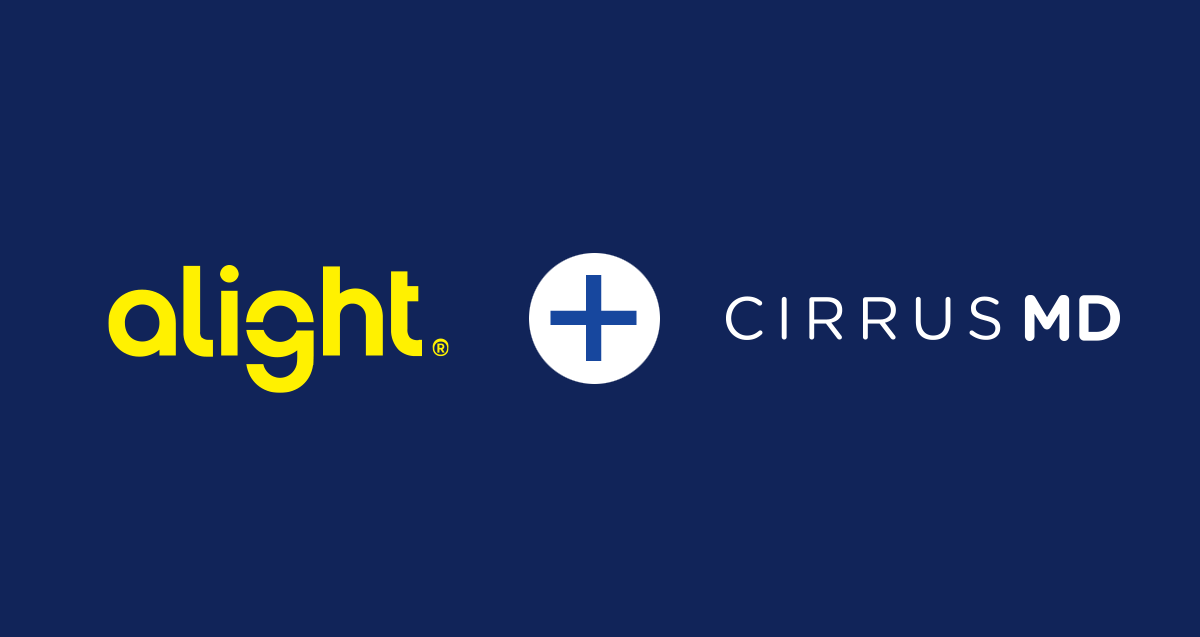
Perhaps the most discussed subject among human resources leaders recently has been the surge in employee turnover rates, dubbed the “Great Resignation.”
Issues like work-life balance, well-being and low employee morale were already fueling high turnover, but worker discontent was supercharged by the mental health crisis and employee burnout spawned by the COVID-19 pandemic.
In the wake of these challenges, HR leaders are left to devise effective employee retention strategies to hold on to top talent and stem employee turnover. And, importantly, to be able to measure the effects on job satisfaction and the bottom line.
While perks like flexible schedules, tuition reimbursement , recognition programs and financial wellness are often top of mind, healthcare benefits can also be key to a successful employee retention strategy.
CirrusMD set out to measure the specific effect that providing a virtual care benefit can have on reducing employee turnover. The results come from one of our enterprise customers, and the magnitude of the impact may surprise you.
Employee Retention Study Methodology
To derive our findings, we calculated a monthly turnover rate using the methodology advocated by the Society for Human Resource Management (SHRM).* We then compared the customer’s employees who had an encounter on CirrusMD versus those that had no engagement with CirrusMD over a recent 15 month period. We studied the overall population, as well as certain segments, to determine how factors like benefits, dependents, tenure, or job type impacted the data.
Employee Retention Study Findings
Overall Results
For the overall population and 6 of the 7 cohorts studied, individuals that used CirrusMD had a statistically significant lower turnover rate. Among the overall population, the employee turnover rate was reduced by 45% among workers who used CirrusMD’s virtual care at least once.
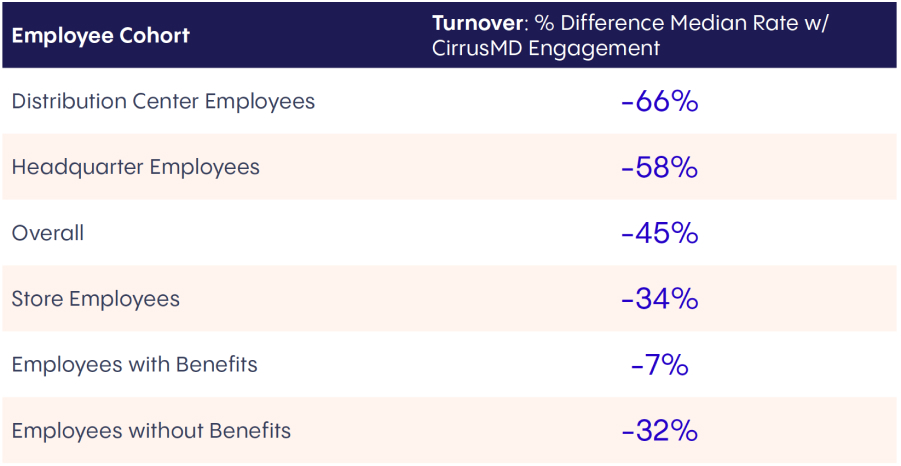
Worker retention was even better among employees who used CirrusMD multiple times over the research period. Employee turnover declined another 15% for those who consulted with CirrusMD physicians 2+ times versus those who had a single consultation.
Distribution Center Employees Showed the Biggest Gain
Employee turnover was highest among our customer’s distribution center workers. However, current employees who used CirrusMD had a retention rate 66% higher than their peers who did not use our virtual care.
Improvements to employee retention rates that are this significant can have a profound impact on a company.
By retaining your best employees, there is less need to recruit new hires and upskill them. When fewer employees quit, there is better business continuity. A loyal workforce is also a good barometer of employee satisfaction.
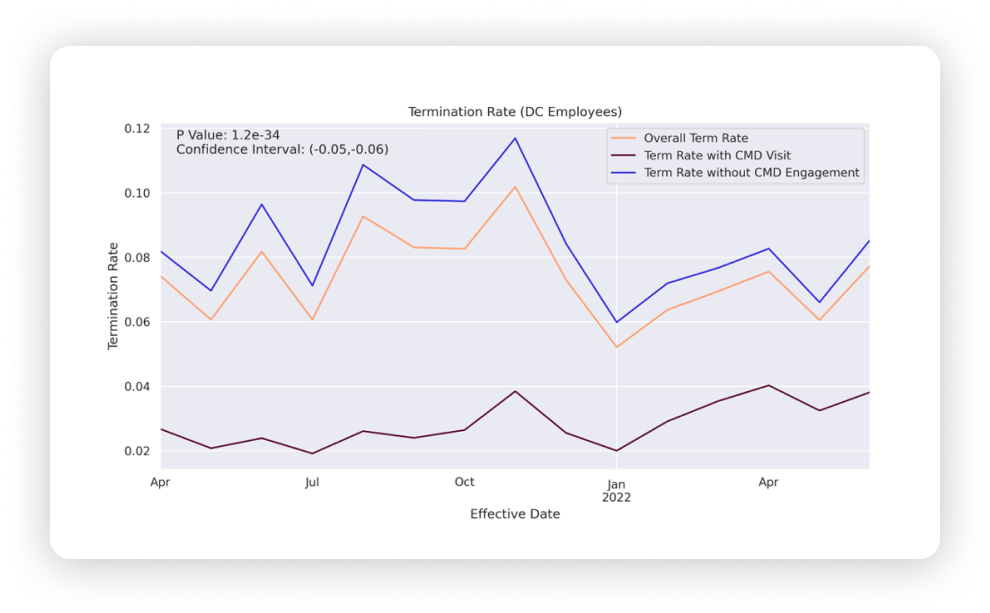
Store Employees Also Showed Significant Retention Improvement.
Those workers at our customer’s retail locations also demonstrated remarkable improvement across both full-time and part-time workers. Employee retention was 34% higher among workers who used CirrusMD versus those who did not.
As with their fellow workers at the distribution center, when employee retention rates are this high, it reflects well on the employee experience and workplace culture at the retail stores, and becomes a competitive advantage to retain good employees.
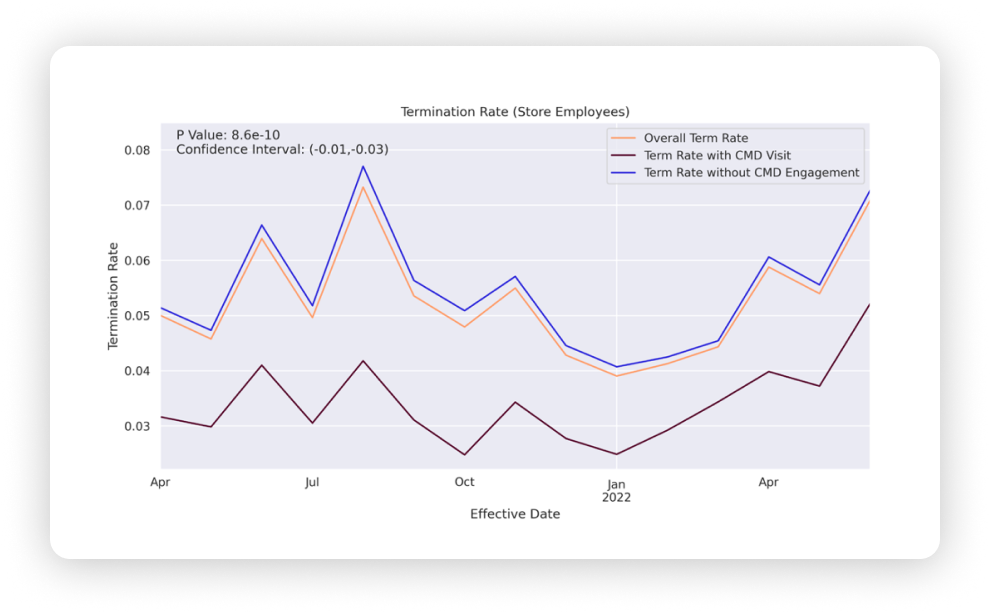
Office Workers Showed Gains Too
For this CirrusMD customer, headquarter-based employees represent the smallest group. While most of these office workers are in the corporate location, there are remote employees in various roles throughout the U.S. While turnover in this group is extremely low, employee retention was nevertheless 58% higher among workers who used CirrusMD versus those who did not.
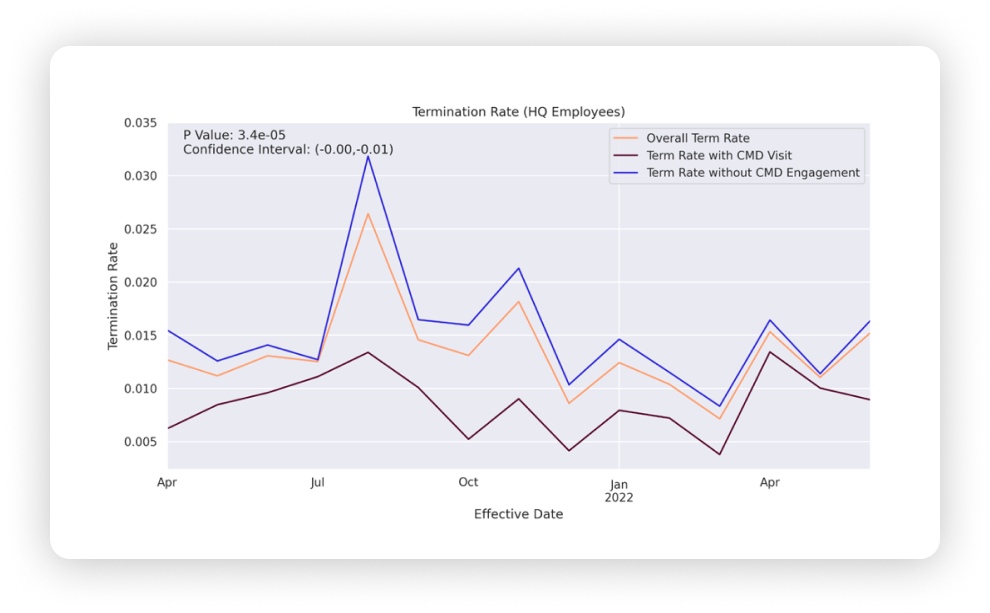
Even Uninsured Employees Showed Improved Retention
The customer covered in this study chose to also provide CirrusMD virtual care access to its uninsured and benefits unenrolled workers, including part-time, hourly and seasonal employees. While this initiative began as a means to support the health of its frontline employees during the COVID-19 pandemic, it has been made more of a permanent perk due to its positive impact on employee engagement and satisfaction.
For those uninsured and benefits unenrolled workers covered in this study, there was a 32% reduction in employee turnover among those who used CirrusMD versus co-workers who did not.
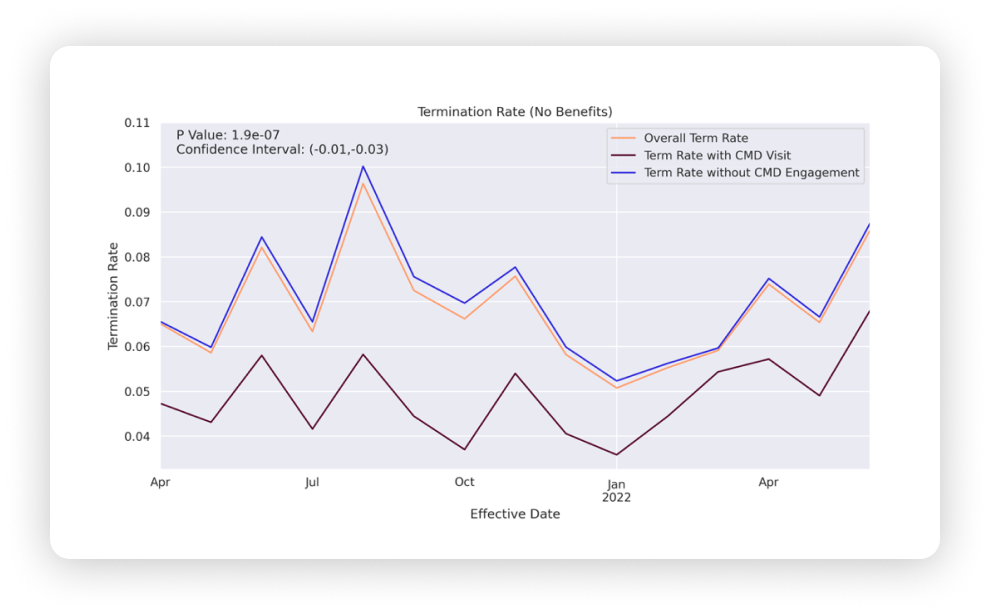
Conclusion
It’s often difficult for human resources leaders to identify the return from its employee benefits investment, especially around healthcare benefits. Our research set out to determine the impact that using CirrusMD’s virtual care solution would have on employee retention.
The findings established a strong, consistent correlation between usage of CirrusMD and a lower employee turnover rate.
In a tight job market, this can be a competitive advantage. Rather than continuously recruiting and training new employees, the emphasis can shift to longer term goals like professional development.
Implementing a health benefit that all employees can access and use conveniently can also strengthen your initiatives around DE&I, employee appreciation and building a healthy work-life balance.
*SHRM calculates turnover rate using this methodology. We applied this calculation to arrive at our customer’s turnover rate.
About CirrusMD
CirrusMD is a different kind of virtual care company. In less than 60 seconds, patients begin chatting with one of our physicians, then dictate the pace and cadence of the encounter. CirrusMD’s integrated care is delivered by multi-specialty, board-certified doctors who treat a broad range of conditions — from acute to chronic — across a spectrum of disciplines, from primary care to specialties including behavioral health and women’s health. CirrusMD is available to nearly 10 million users across all 50 states, and offered through self-funded employers, as well as commercial and government-sponsored health plans.

